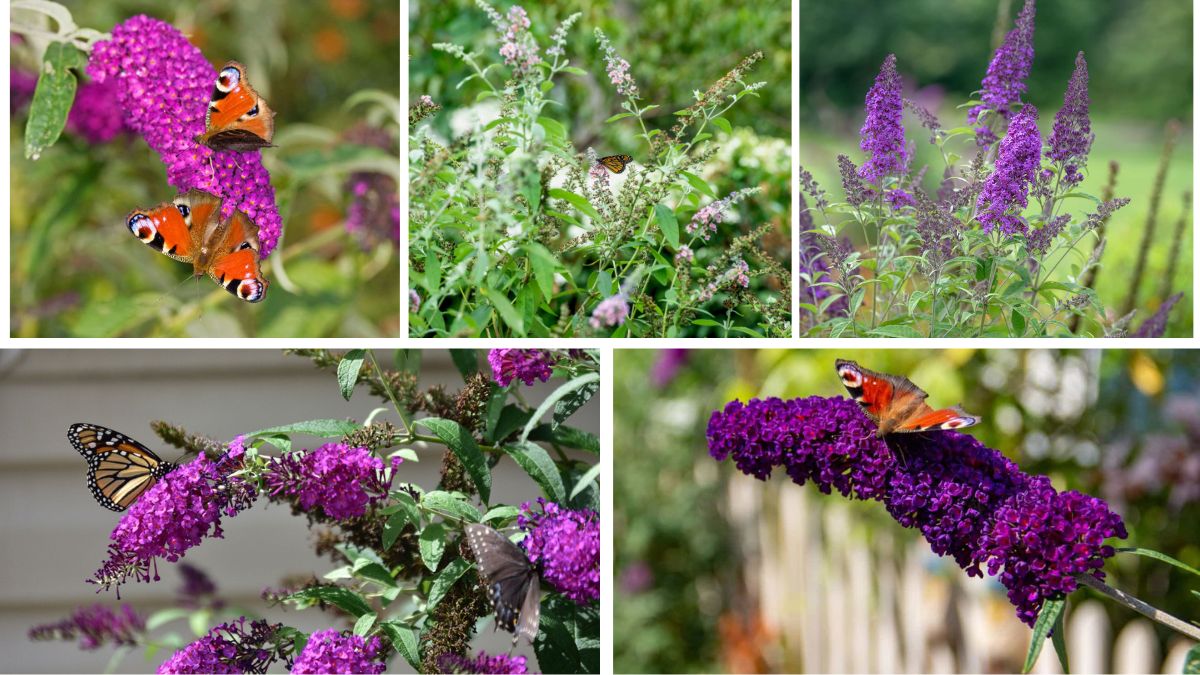A garden alive with fluttering butterflies is a magical sight, and one of the best ways to attract these delicate pollinators is by planting butterfly bushes. Known scientifically as Buddleja or Buddleia, butterfly bushes are fast-growing, flowering shrubs that bloom abundantly, providing nectar for butterflies, bees, and hummingbirds. With their vibrant flower spikes and aromatic scent, these plants are a favorite among gardeners seeking both beauty and biodiversity.
If you’re ready to create a pollinator-friendly haven, here’s a complete guide on how to grow and care for butterfly bushes.
Why Choose Butterfly Bushes?
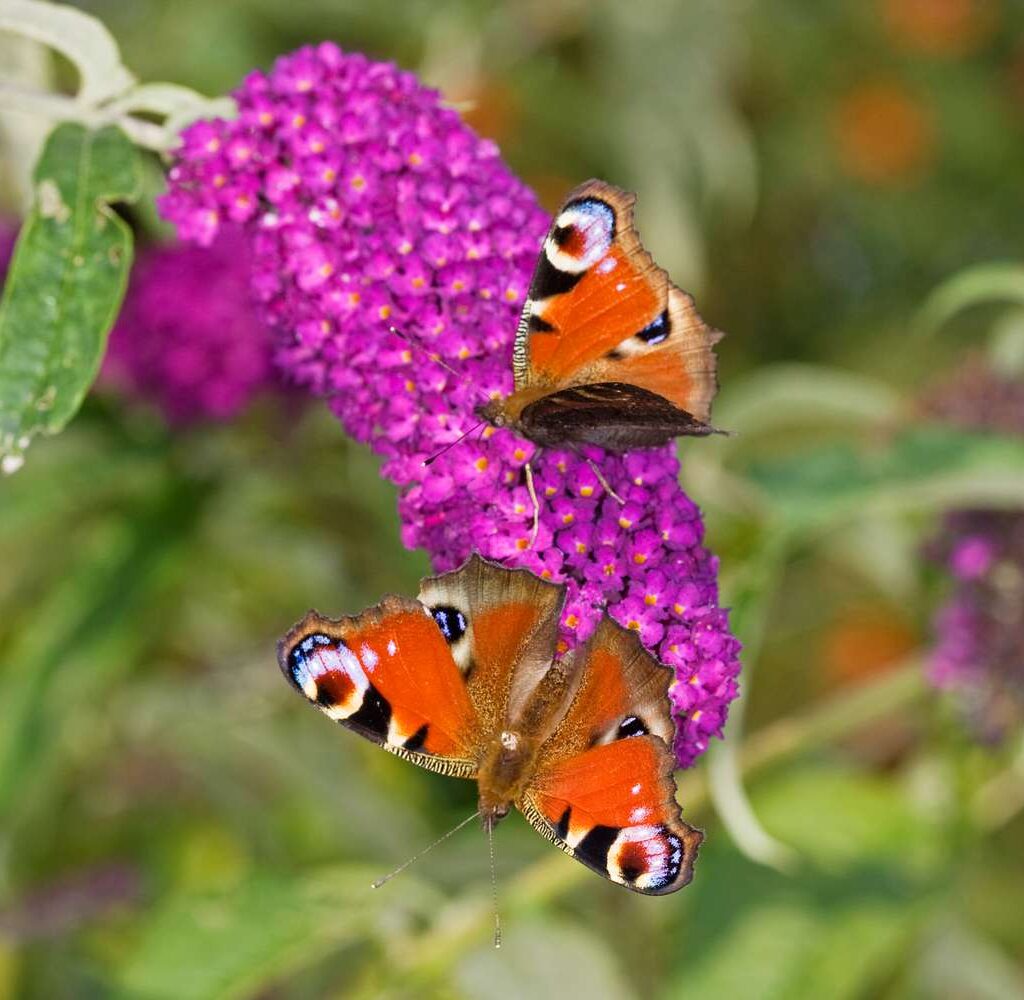
Butterfly bushes offer numerous benefits for your garden:
- Attract Pollinators: Butterflies, bees, and hummingbirds are naturally drawn to the nectar-rich flowers.
- Vibrant Blooms: Flower spikes come in shades of purple, pink, white, blue, and orange.
- Low Maintenance: Once established, they are drought-tolerant and relatively pest-resistant.
- Long Blooming Season: Most varieties bloom from summer to fall, providing color for months.
- Versatility: Can be grown in garden beds, borders, containers, or as hedges.
Their combination of beauty, ease of care, and ecological value makes butterfly bushes an excellent addition to any garden.
Selecting the Right Variety

There are numerous butterfly bush varieties, ranging from dwarf types suitable for small gardens or containers to larger shrubs for borders or hedges. Some popular varieties include:
- ‘Miss Molly’: Compact, lavender-colored flowers, ideal for small spaces.
- ‘Black Knight’: Deep purple blooms, excellent for larger gardens.
- ‘Pink Delight’: Soft pink flowers with a sweet fragrance.
- ‘Lo & Behold’ series: Dwarf varieties perfect for pots and container gardening.
When choosing a variety, consider your garden space, climate, and desired flower colors. Many dwarf varieties are especially useful for patios, balconies, or small urban gardens.
Planting Butterfly Bushes
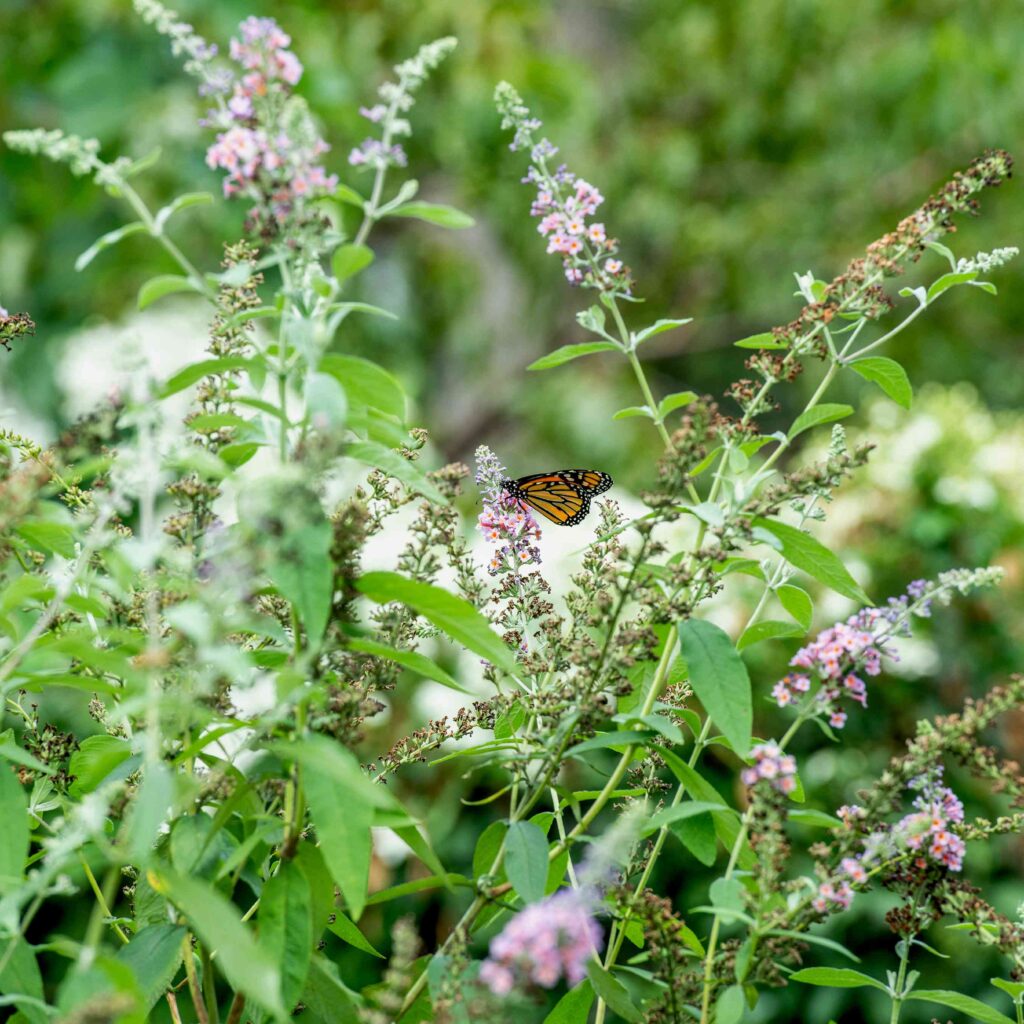
1. Choose a Sunny Location
Butterfly bushes thrive in full sun, requiring at least 6–8 hours of sunlight daily. Adequate sunlight ensures abundant blooms and strong growth.
2. Soil Requirements
- Well-Drained Soil: Butterfly bushes dislike soggy roots, so sandy or loamy soil works best.
- Slightly Acidic to Neutral pH: Aim for soil pH 6.0–7.0.
- Enrichment: Mix in compost or well-rotted manure to provide nutrients for the first few growing seasons.
3. Planting Tips
- Space larger varieties 5–10 feet apart, and dwarf varieties 2–3 feet apart.
- Dig a hole twice as wide as the root ball and just as deep.
- Position the plant, backfill with soil, and water thoroughly.
Caring for Butterfly Bushes
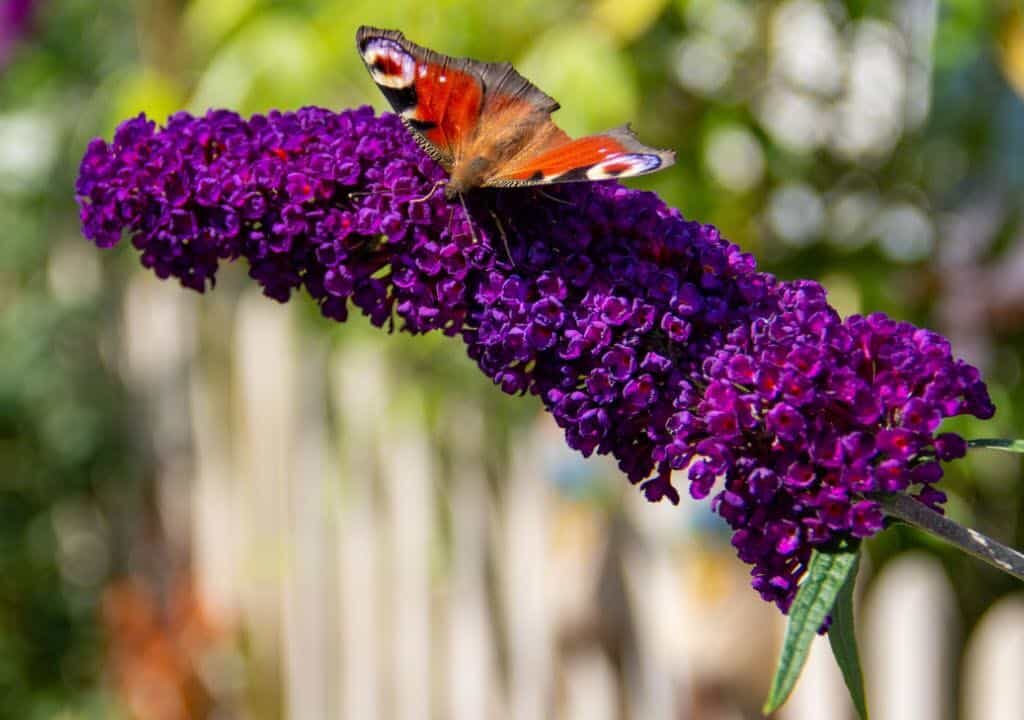
1. Watering
Butterfly bushes are drought-tolerant once established but require regular watering during the first growing season. Deep watering encourages strong root growth.
- Water 1–2 times per week during dry spells.
- Avoid overwatering, which can lead to root rot.
2. Fertilization
Excessive fertilization can encourage leaf growth over flowers. Use a balanced, slow-release fertilizer in spring:
- NPK 10-10-10 is suitable.
- Avoid high-nitrogen fertilizers, which reduce flowering.
3. Pruning
Pruning is key to keeping butterfly bushes healthy, compact, and flowering abundantly:
- Late Winter or Early Spring: Cut back last year’s growth to about 12–24 inches from the ground.
- Deadheading: Remove spent flower spikes during the blooming season to encourage more blooms.
- Shaping: Trim sides lightly to maintain a pleasing shape.
Proper pruning ensures strong stems, abundant flowers, and prevents legginess.
4. Mulching
Apply a 2–3 inch layer of organic mulch around the base to conserve moisture, regulate soil temperature, and suppress weeds. Avoid piling mulch directly against the stems to prevent rot.
Dealing with Pests and Diseases
Butterfly bushes are relatively pest-resistant, but occasionally may face:
- Aphids: Small, soft-bodied insects that suck plant sap. Spray with a mild soapy water solution.
- Spider Mites: Tiny pests that create fine webs. Increase humidity and rinse foliage to control them.
- Powdery Mildew: Fungal disease causing white powdery spots. Improve air circulation and avoid overhead watering.
Maintaining healthy, well-spaced plants reduces susceptibility to most problems.
Attracting More Butterflies
While butterfly bushes provide nectar, you can enhance your garden’s pollinator appeal:
- Plant a Variety of Flowers: Include native flowering plants to provide continuous blooms throughout the season.
- Avoid Pesticides: Chemical sprays harm butterflies and other pollinators.
- Add Water Sources: A shallow birdbath or water dish attracts butterflies and beneficial insects.
- Provide Shelter: Include shrubs, grasses, or small trees for butterflies to rest.
By creating a pollinator-friendly environment, your garden becomes a vibrant haven for butterflies and other beneficial insects.
Growing Butterfly Bushes in Containers
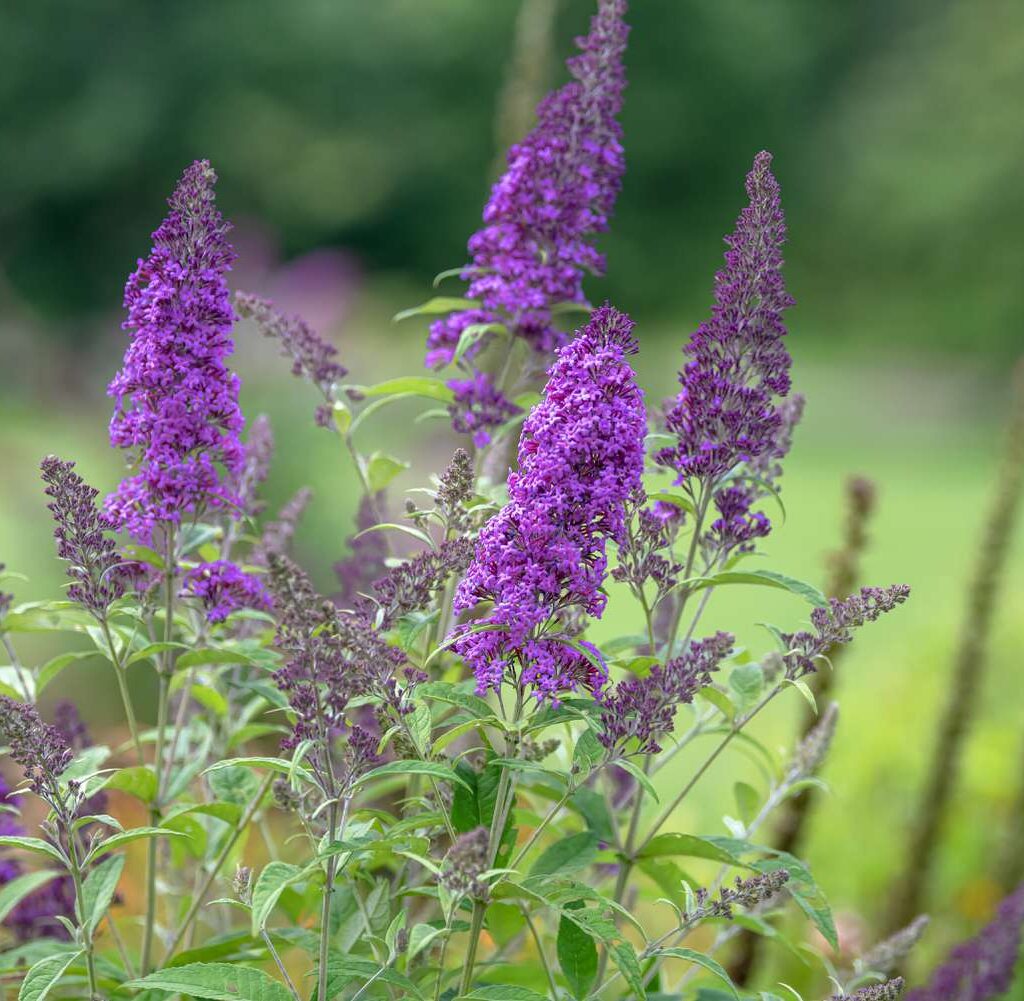
If space is limited, butterfly bushes grow well in containers:
- Use large pots with drainage holes.
- Fill with high-quality potting soil mixed with compost.
- Choose dwarf varieties like ‘Lo & Behold’ or ‘Miss Molly’ for compact growth.
- Water regularly but avoid waterlogging.
- Fertilize lightly during the growing season.
Container-grown bushes can be moved to sunny spots and protected during harsh winters.
Seasonal Care
- Spring: Prune, fertilize lightly, and water regularly.
- Summer: Deadhead flowers to prolong blooming; monitor for pests.
- Fall: Reduce watering as plants enter dormancy; mulch roots to protect from frost.
- Winter: In colder climates, cut back stems to 12 inches and cover roots with mulch. Container plants may need indoor protection.
Propagating Butterfly Bushes
Propagation is a cost-effective way to expand your garden:
- Softwood Cuttings: Take 4–6 inch cuttings in late spring or early summer, remove lower leaves, and root in a moist potting mix.
- Root Division: Rarely done but possible with mature plants.
- Seed Propagation: Collect seeds after blooms fade; germination is slower but rewarding.
Propagation allows you to grow multiple bushes without buying new plants.
Benefits Beyond Beauty
- Environmental: Supports pollinators like bees, butterflies, and hummingbirds.
- Culinary: Some Buddleja species are used in teas in certain cultures.
- Medicinal: Traditional medicine uses butterfly bush leaves for anti-inflammatory purposes.
- Aesthetic: Their long, colorful flower spikes create a striking focal point in any garden.
A well-planned butterfly bush garden adds ecological, visual, and sensory benefits.
Conclusion
Growing and caring for butterfly bushes is a rewarding endeavor for any gardener. With vibrant flowers, sweet nectar, and low-maintenance growth, these shrubs attract butterflies and beneficial insects while adding year-round beauty. By following these steps—selecting the right variety, planting in sunny locations, watering properly, pruning regularly, and ensuring good soil health—you can create a thriving butterfly garden that flourishes season after season.
Whether planted in garden beds, borders, or containers, butterfly bushes transform outdoor spaces into colorful, pollinator-friendly retreats. By incorporating companion flowers and providing water and shelter, you create a haven that supports biodiversity and offers endless enjoyment.
Start planting today, and soon your garden will be alive with fluttering wings, sweet scents, and vibrant blossoms—proof that a butterfly bush is not just a plant, but a gateway to a thriving, beautiful ecosystem.
